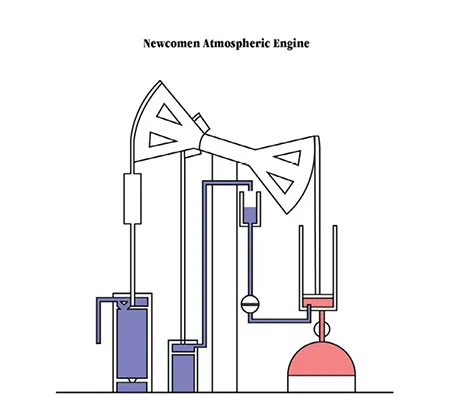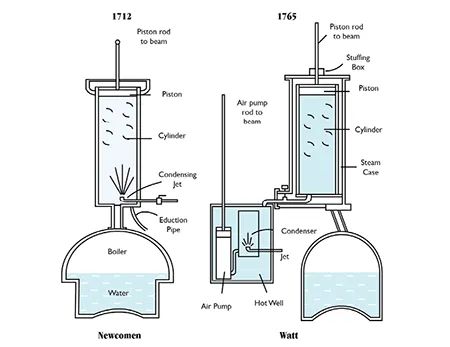Chapter 1
If you’ve ever eaten food you didn’t grow, put on clothes you didn’t make, driven a car, used electricity, watched TV, used a phone or computer, slept on a bed, used a toilet, consumed water from a tap, or been inside a building, then congratulations, you’ve lived with the consequences of the Industrial Revolution. This event was the single biggest change for mankind in history.
Before the Industrial Revolution, people lived on the land that provided them with food and the means for clothing and shelter. Average life expectancy was around forty years (including infant mortality), and any form of structured education was extremely rare. All the while, disease and malnutrition were rife. Until the revolution, humans never used tools or objects that weren’t produced within their immediate community or traded. The fastest any human could travel was the speed of a horse. Over 80 percent of the population lived on farms. With no mass production or the ability to transport large quantities of goods a long distance, people had to be close to their source of food. It was the only means of living. Today, the number of people on farms in the United States is down to less than 1 percent.
So where did the dawn of our modern era take place?
It all began in England, around 1712. At the time, a primitive tin and coal mining industry existed, but there was a major problem. The mines would get flooded whenever it rained, and in England, rain was a pretty common occurrence. Every time a mine flooded, production stopped. This meant that production was subject to weather conditions. To deal with the flooding, scores of men carrying endless buckets of water would be commissioned to bail out the mines. As you can imagine, this was very inefficient and costly. There had to be a better solution.
Enter Thomas Newcomen from Dartmouth, Devon. He was the inventor of the first practical steam engine.
What’s important here is the revolutionary application of one of water’s most fundamental properties: that heated water turns to gas (steam), and that this steam expands, pushing objects in its wake, causing motion. This was the first practical device that used steam to produce motion.
This steam pump (now named the Newcomen engine) was put to use in the mines. This in turn increased the production of coal and tin. Through the power of steam, human effort was no longer needed to bail out the flood water. As great as this was, there were some problems with Newcomen’s engine. It was slow and used a lot of coal, making it expensive to run.
James Watt
With a basis to start from, there was now room for someone to come through and improve the technology of the Newcomen steam engine. That someone was Scotsman James Watt, the man who truly got the revolution going.
Born on January 19, 1736, James Watt was the son of a shipyard owner. While in school, he was taught Latin and Greek, but was thought to be “slow” by his teachers. As it turned out, he just wasn’t interested in language. When it came to engineering and mathematics, however, James excelled.
At age nineteen, he went to Glasgow to study the trade of making precisely calibrated instruments such as scales and parts for telescopes. Watt eventually made instruments for the University of Glasgow. During his time at the university, Watt was given a model of a Newcomen engine to repair. Very quickly, he became interested in steam engines and noticed how inefficient the standard Newcomen engine of the day was. He decided he could improve it. While taking a walk on a Sunday afternoon in 1763, an idea struck him. Instead of heating and cooling the same cylinder, why not have a separate chamber that condenses the steam? This meant that the machine could work in both an upstroke and a downstroke motion.
This idea would end up cutting the fuel needed by 75 percent. After experimenting with a small model of his new design, Watt was convinced it would work. Soon, a partnership with an industrialist by the name of Matthew Boulton was formed. This partnership would alter the world for good.
It has been said that Boulton was a little like Steve Jobs, an enthusiastic, business-minded individual, while Watt was like a gloomy version of Steve Wozniak—the man behind most of the technical work. This isn’t far from the truth, although there was much more crossover in the roles of Watt and Boulton than with Apple’s founders.
Throughout the mid-1770s, James Watt and Matthew Boulton would use their own company (Boulton & Watt) to distribute the new steam engines throughout England. The impact was immediate within the mining industry, and also reached the liquor industry in grinding malt.
To explain the benefits of the machine, Watt had to come up with a way of relaying its power. He figured that a horse could pull around 82 kg (180 pounds), so, in his description to customers, Watt would say, for example: my machine has the power of twenty horses—twenty horsepower. This is in fact where the unit of power came from.
Subsequent improvements in the steam engine soon opened the door to powered factories and a revolution in the textile industry. For the first time, the mass production of goods was possible. These conditions allowed for new employment opportunities in city locations. As a result, job seekers left their farms and headed to the city in search of a new life.
Steam power had now revolutionized production, but Watt realized that, by expanding the gas at even higher pressure, this invention could be used in transportation. The locomotive application for the steam engine would push humanity to another level. The first patent of this kind was obtained in 1784 by Watt, though it is often said to be the brainchild of Boulton & Watt employee William Murdoch. These patents barred anyone from creating higher-pressure versions of the Watt steam engine until 1800. When the patent expired, the floodgates were opened, and innovation flowed.
One of the first improvements was made by Cornish engineer, Richard Trevithick, who enabled the use of high-pressure steam. Yielding more power, this development opened the door to feasible locomotive steam engines. Improved designs and power-to-size ratios meant that engines became so compact they could be used, not just in factories, but also in mobile machines.
The year 1804 was monumental in history. That year would see the world population reach one billion, the isolation of morphine, and Napoleon come to power; but most of all, it was the first time goods were transported over land without the power of man or animal. This feat came in the form of a steam locomotive with a speed of 8 km an hour (5 miles per hour) carrying a load of more than twenty-five tons. Not bad, considering cars were still almost a century away.
Steam-powered trai...


